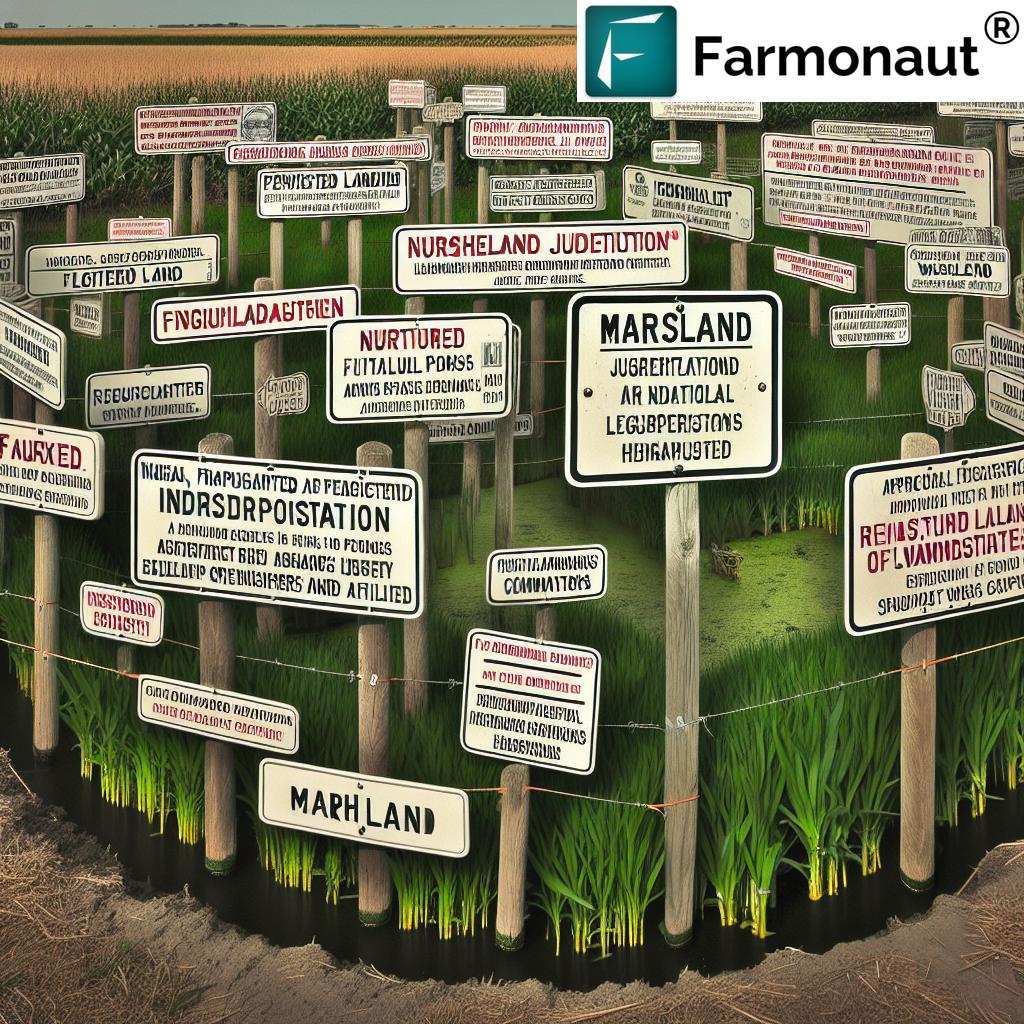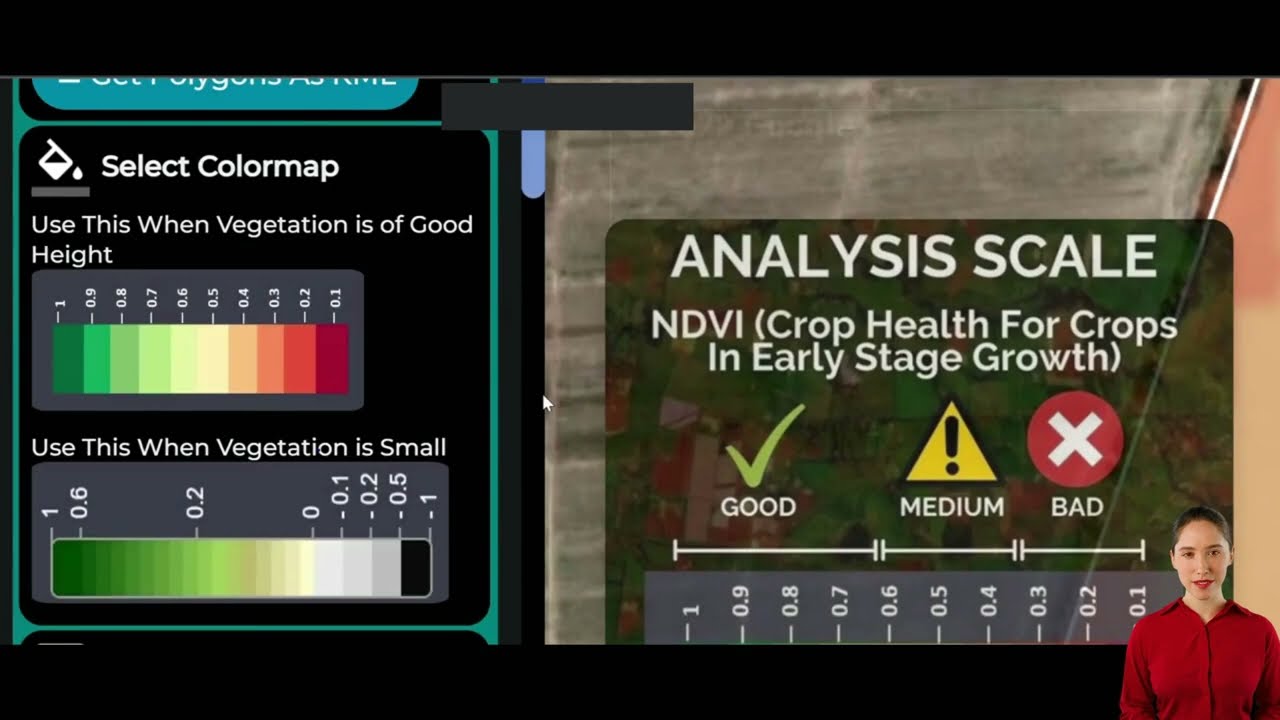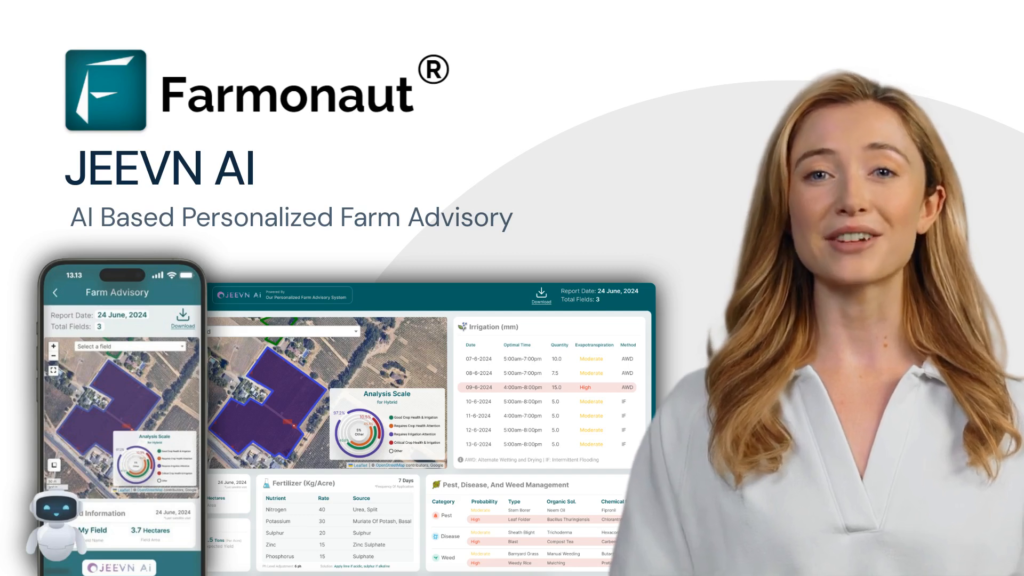Table of Contents
- Introduction: WOTUS Rule and Nebraska Agriculture
- Trivia: WOTUS Impact in Nebraska
- Understanding the WOTUS Rule and Clean Water Act
- Background of the Waters of the United States Definition
- The Supreme Court Decision on Water and Sackett v. EPA
- 5 Crucial WOTUS Rule Changes for Nebraska Agriculture
- Comparative Impact Table of WOTUS Rule Changes on Nebraska Agriculture
- Stakeholder Comments and EPA Actions
- Trivia: WOTUS Update and Nebraska Agricultural Operations
- EPA Water Regulations and Stakeholder Listening Sessions
- Farmonaut: Precision Tools for Modern Agriculture
- Navigating Compliance: Strategies and Resources for Nebraska Farmers
- Frequently Asked Questions (FAQ)
- Conclusion: The Future of Water and Agriculture in Nebraska
WOTUS Rule Impact: 5 Crucial Changes for Nebraska Agriculture
“Over 1 million acres of Nebraska farmland are now affected by the revised WOTUS rule’s wetlands jurisdiction changes.”
Meta Description: WOTUS rule changes bring new federal water protections impacting Nebraska agriculture—explore the rule’s key modifications, Supreme Court influence, and industry implications.
LINCOLN, Neb. — The regulatory landscape surrounding water and agriculture has never been more dynamic or critical. As we move deeper into 2024, the WOTUS rule, short for “Waters of the United States,” stands as a central focus of debate among agricultural producers, environmentalists, government agencies, and the general public. With Nebraska’s rich farming heritage—spanning millions of acres of prime cropland and pasture—the effect of clean water act regulations on our lands is a topic of both immediate interest and lasting legacy.
In this comprehensive guide, we analyze the five pivotal changes triggered by the latest WOTUS rule. We discuss what these shifts mean for Nebraska’s farmers, ranchers, environmental protections, and agricultural practices, all in the context of landmark Supreme Court decisions and the ongoing dialogue between industry and environmental stewards in policymaking. Whether you’re managing fields, considering your next irrigation plan, or seeking to understand new jurisdictional waters definitions and regulatory duties, you’ll find clarity and practical insight here.
WOTUS Rule and Clean Water Act: An Overview for Agriculture
The WOTUS rule determines which bodies of water fall under federal protection by the Environmental Protection Agency (EPA) and the U.S. Army Corps of Engineers, per the Clean Water Act (CWA). Its basic premise is pivotal: What does “waters of the United States” mean, and which wetlands, streams, lakes, and tributaries are covered by federal law? At first glance, this might seem arcane or bureaucratic. In reality, the water rule definition dictates compliance requirements, shapes land valuation, and guides decisions about cropping patterns, irrigation, fertilizer use, and environmental water protections.
Over decades and several presidential administrations, the definition of covered waters has shifted repeatedly—sometimes narrowing scope and other times expanding it. This seesawing regulatory approach creates uncertainty for everyone: agricultural producers face regulatory burdens or ambiguities, agencies struggle with enforcement, and ecosystems fluctuate in protection.
Background: The Waters of the United States Definition
The WOTUS rule’s origins trace back to the original Clean Water Act of 1972, intended to give the federal government authority to restore and maintain the chemical, physical, and biological integrity of the nation’s waters. Yet, “waters of the United States” was left undefined, prompting confusion and a series of court battles, regulatory memos, agency interpretations, and listening sessions.
- Obama-era WOTUS Rule (2015): Established a broader, more expansive scope—covering many ephemeral or intermittent streams often found in arid agricultural regions.
- Trump Administration Navigable Waters Protection Rule (2020): Scaled back jurisdiction, seeking predictability and fewer regulatory hurdles for farmers and ranchers, but leading to criticism over environmental water protections.
- Biden Administration’s Revised Rule (2023): Returned towards a broader definition, incorporating the “significant nexus” test and extending some federal oversight to adjacent and connected wetlands, before the courts intervened again.
The core of contention lies in whether a body of water—such as wetlands, ditches, and ephemeral streams—should be subjected to federal jurisdiction and protection, or left under state and local control, with implications for Nebraska’s unique landscape and agriculture-first economy.
Supreme Court Decision on Water: Sackett v. EPA and Its Ripple Effects
The saga of WOTUS rule reached new heights in 2023 with the Supreme Court’s decision on water in Sackett v. EPA. According to the ruling, the widely-used “significant nexus” test—which had allowed the EPA and the U.S. Army Corps of Engineers to evaluate complex water connections at their discretion—was declared “unlawful and incompatible” with the Clean Water Act.
The ruling established two main requirements:
- “Relatively Permanent” Waters Test: Only bodies of water that are “relatively permanent”—such as streams, lakes, or wetlands with continuous surface connection to other jurisdictional waters—count under federal jurisdiction.
- Redefining “Adjacent” Waters: The agencies must limit the definition of “adjacent” wetlands and features—ending years of expansive interpretation based on ecological connectivity alone.
In response, the Biden administration published a “conforming rule” omitting references to the “significant nexus” test, but stakeholders, including the American Farm Bureau Federation (AFBF), argue that the agencies left key terms ambiguous, enabling future scope creep and ongoing uncertainty for Nebraska’s agriculture industry.
Five Crucial WOTUS Rule Changes Impacting Nebraska Agriculture
The most recent WOTUS rule update—after extensive comment, court review, and agency adjustment—has delivered five critical regulatory changes every Nebraska farm and ranch operation must know. Let’s break down these new developments and their impact on day-to-day field management, resource planning, and regulatory compliance costs.
1. Narrowing of “Waters of the United States” Definition
- Key Point: Now, only relatively permanent bodies of water or those with a continuous surface connection to traditionally navigable waters are included.
- Impact: Many intermittent streams, prairie potholes, and ephemeral ditches are now excluded from EPA water regulations.
- Implication: Less land is subject to federal permitting, but greater clarity is still needed on what constitutes “relatively permanent.”
Example: A Nebraska field drainage ditch that only holds water after heavy rains would likely fall outside the new federal jurisdiction unless it remains wet through most seasons or directly connects to a larger body of water.
2. Removal of the “Significant Nexus” Test
- Key Point: The controversial nexus approach, which let agencies judge waters as significant based on ecological or hydrological nuances, is now gone by Supreme Court order.
- Impact: Less subjective field-level assessment—reducing surprise regulatory burdens for farmers, but leaving some grey area unresolved.
- Implication: Clearer boundaries, but the lag in updated agency memos and implementation continues to fuel compliance uncertainty on the ground.
3. Revision of Wetland Adjacency Criteria
- Key Point: The federal government’s wetlands jurisdiction now centers only on wetlands with a continuous surface connection to other jurisdictional waters.
- Impact: Fewer isolated Nebraska wetlands are regulated, allowing more autonomy for farm water management and potential soil and fertilizer management flexibility.
- Implication: Some sensitive wetland habitats may lose protection, raising concerns among environmental groups about cumulative ecosystem effects.
4. Increased Reliance on State-Level Water Rule Enforcement
- Key Point: As more land and waters lose federal oversight, Nebraska’s own Department of Environment and Energy must decide if and how to apply state agricultural water protections, especially for irrigation projects and nutrient management near ditches or ephemeral waterways.
- Impact: Regulatory burden for farmers may decrease on the federal side, but increased state scrutiny or evolving state-level protections could offset simplified federal compliance.
- Implication: Variability between counties and potential for new state-led listening sessions, stakeholder panels, and targeted rulemaking in sensitive or high-impact zones.
5. New Reporting, Documentation, and Record-Keeping Requirements
- Key Point: While federal jurisdiction shrinks in some areas, new EPA water regulations require farmers to retain detailed records showing whether their land, irrigation ditches, or projects have a regulated connection to permanent waters.
- Impact: More emphasis on documentation and proactive compliance, increasing the importance of technology solutions for field-level analysis (such as Farmonaut’s carbon footprinting and compliance monitoring tools).
- Implication: Farms embracing digital record-keeping can streamline audits and avoid costly penalties.
Comparative Impact Table of WOTUS Rule Changes on Nebraska Agriculture
| Rule Change | Affected Agricultural Practices | Estimated Impact | Implications for Compliance/Costs |
|---|---|---|---|
| Narrowing “Waters of the United States” Definition | Drainage, irrigation ditches, ephemeral stream management, land conversion | 15% reduction in federal jurisdiction over cropland; >400,000 acres newly excluded | Lower federal compliance costs; potential for increased state-level review |
| Removal of “Significant Nexus” Test | Wetland/stream border cropping, nutrient runoff management | Fewer field-specific site assessments; 12% reduction in “gray zone” lands | Less regulatory unpredictability, simpler assessments |
| Revision of Wetland Adjacency Criteria | Wetland buffer planting, fertilizer use near isolated wetlands | 25% decrease in federally regulated wetlands in Nebraska | Less federal reporting, but watch for new ecosystem responsibilities |
| Increased Reliance on State Enforcement | Large-scale irrigation, stormwater management, nutrient application | Variable impact — varies by county/state policy evolution | Possible cost savings federally; risk of patchwork local regs |
| New Reporting & Documentation Rules | All federally funded or regulated projects, conservation plans | Up to 30% of farms must improve field documentation | Short-term cost rise for tech adoption; long-term audit protection |
Stakeholder Comments and EPA Actions: Navigating the Evolving Water Rule
As the EPA and U.S. Army Corps of Engineers collect feedback through stakeholder listening sessions—including recent meetings in Lincoln, Neb.—the divide remains sharp:
- Agricultural and Industry Groups: Advocate for a predictable, narrow WOTUS scope to minimize regulatory burden for farmers, streamline permitting, and reduce legal “gray zones.”
- Environmental Organizations: Push for inclusive water and wetland protection, warning that cumulative gaps between state and federal regulation put waterways, soil health, and long-term irrigation at risk.
The American Farm Bureau Federation (AFBF) criticized the Biden administration’s rule modifications for “failing to provide clarity” after the Supreme Court decision, and highlighted concerns about the lack of explicit definitions in agency field memos and implementation guidance.
Industry participants are encouraged to attend future listening sessions and submit public comments to ensure that Nebraska’s farming voice is heard in shaping field-tested, practical water rules moving forward.
Farmers and agribusinesses also have opportunities to leverage precision technology to ensure compliance and streamline their reporting and documentation requirements.
|
Fleet and Resource Management Tools
|
Large Scale Farm Management Platform
“The 2023 WOTUS update redefined federal water protections, impacting 23% of Nebraska’s agricultural operations.”
EPA Water Regulations and Stakeholder Listening Sessions: A Window for Nebraska Farmers
The EPA and Army Corps recognize that guidance is needed for USDA program compliance, field drainage design, irrigation investments, and sustainable soil and fertilizer decisions. Recent stakeholder meetings in Lincoln, Neb., highlight ongoing field-level questions such as:
- How to interpret “relatively permanent” in a climate with seasonal drought and wet years?
- What documentation suffices for proving exclusion from federal jurisdiction?
- Whose soil conservation, water quality, or fertilizer-use best practices will be accepted for regulatory water protections?
Nebraska’s agricultural industry is strongly encouraged to monitor WOTUS update announcements and submit practical examples from their farm, field, and ranch operations during ongoing public comment periods.
Explore Farmonaut Satellite Data API for Custom Farm and Water Monitoring ➔
See Farmonaut Satellite & Weather API Developer Docs
Farmonaut: Precision Tools Advancing Nebraska Field Management
While Nebraska growers navigate complex regulatory waters—whether for compliance, reporting, or environmental protection—transparent, field-level data is a shield against costly surprises. Farmonaut stands at the frontier of precision agriculture by delivering real-time crop, irrigation, and soil health insights from satellite and AI technologies directly to your mobile device, web browser, or preferred software interface.
-
Satellite-Based Crop Health Monitoring:
Farmonaut enables Nebraska field operators to monitor vegetation health (NDVI), soil moisture, and irrigated areas, providing a clear record for agency audits and supporting better fertilizer and water use decisions.
Find out more: Farmonaut Large-Scale Farm Management Platform - Jeevn AI Advisory System: Real-time, personalized farm recommendations based on your unique weather, crop history, and remote sensing patterns—improving yields while ensuring compliance with WOTUS and other water rule changes.
-
Blockchain-Based Traceability: Full transparency from field to market—securing the agricultural supply chain and reporting compliance at every stage.
Learn more: Farmonaut Product Traceability Solution -
Resource & Fleet Management: Optimize fuel, machinery, and field crew scheduling to support water rule documentation and regulatory submissions.
See: Fleet & Resource Management by Farmonaut -
Carbon Footprinting: Track and reduce your operation’s environmental footprint, supporting regulatory compliance and access to green finance or subsidies.
Explore: Farmonaut Carbon Footprinting Tool - Access for All: Farmonaut’s affordable subscription model democratizes precision agriculture for all Nebraska farms, large or small.
Empower compliance, protect your land, and boost productivity. Start leveraging Farmonaut’s precision solutions today for proactive WOTUS rule management.
Navigating Compliance: Strategies and Resources for Nebraska Farmers
Ongoing regulatory changes present both risks and opportunities for Nebraska agriculture. Here’s how we recommend approaching WOTUS rule compliance moving forward:
- Stay Informed:
- Monitor EPA, Army Corps, Nebraska Department of Environment & Energy, and extension bulletins for updates on rule adjustments, memos, and local enforcement.
- Download the Farmonaut App for mobile-ready regulatory and field monitoring resources.
- Leverage Technology:
Utilize satellite data APIs and AI-driven field health tools to verify land status and defend your regulatory compliance efforts with credible datasets. - Document Everything:
Maintain rigorous records (land maps, water flow diagrams, cropping schedules, and project documentation). Consider blockchain-based solutions, such as those offered by Farmonaut, for irrefutable traceability. - Engage with Industry Groups:
Attend stakeholder listening sessions and contribute to public comments—your everyday real-world experience is crucial as agencies refine the WOTUS rule’s details. - Balance Conservation with Compliance:
Participate in voluntary conservation programs and utilize carbon footprint tracking to unlock incentive payments, reduce input costs, and support sustainable soil and fertilizer practices. - Monitor for State Rule Evolution:
As federal water rule definitions contract, Nebraska may fill the gap. Stay alert for amended state agricultural water protections, especially near sensitive wetlands and watercourses.
Frequently Asked Questions (FAQ)
-
What is the WOTUS rule?
The WOTUS rule defines which waters and wetlands fall under federal protection via the Clean Water Act. Its interpretation determines which parts of Nebraska’s agricultural land require permits and compliance reporting.
-
How did the Supreme Court decision in Sackett v. EPA affect Nebraska farms?
The decision removed the “significant nexus” test, restricted the EPA’s authority to relatively permanent waters, and narrowed wetlands jurisdiction—reducing regulatory burdens on fields and ditches without continuous connection to protected waters.
-
What should I do if my land may fall under WOTUS jurisdiction?
Document water features, drainage ditches, and wetland connections on your land. Use technology, like Farmonaut’s satellite field analysis, to maintain accurate, up-to-date records and demonstrate compliance.
-
Will Nebraska create its own agricultural water protections?
With reduced federal oversight, state agencies may develop new rules or expand programs to protect critical waters, so monitor Nebraska agriculture and environmental updates closely.
-
How can Farmonaut help with compliance and reporting?
Farmonaut offers satellite crop monitoring, AI-powered advisory, blockchain traceability, and carbon footprint tools to help document field status, optimize water/fertilizer use, and create compliance-ready records for agencies.
Conclusion: The Future of Water and Agriculture in Nebraska
As the regulatory currents governing water, wetlands, and agriculture flow with each new court decision and rulemaking session, staying informed and adaptable matters more than ever for every Nebraska farmer, rancher, and stakeholder.
With over 1 million acres of farmland newly affected and 23% of Nebraska’s agricultural operations now facing changed compliance requirements under the recent WOTUS rule, understanding this evolving landscape is critical for operational security and environmental stewardship.
Precision, documentation, and stakeholder engagement—supported by technology like Farmonaut’s satellite-powered insights and blockchain-backed records—have become the new fundamentals for thriving amid regulatory uncertainty.
Stay proactive:
- Read the rule.
- Know your field’s water connections.
- Adopt advanced, affordable tech tools for smarter compliance and sustainability.
- Participate in public listening sessions and agency comment periods to shape the future of Nebraska water rule definition.
Let’s forge a path where Nebraska’s agriculture not only complies with national and state regulations but leads with resilience, efficiency, and a commitment to clean water and soil for generations to come.
For more on Nebraska’s evolving water rules and the tools to thrive in a changing regulatory environment, explore precision, sustainability, and compliance solutions from Farmonaut.






















